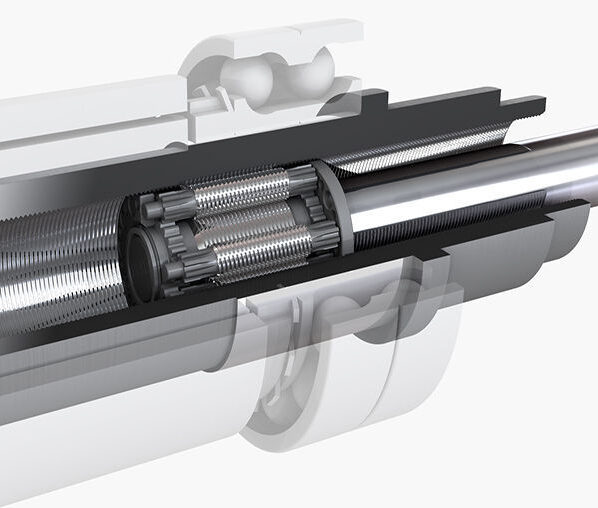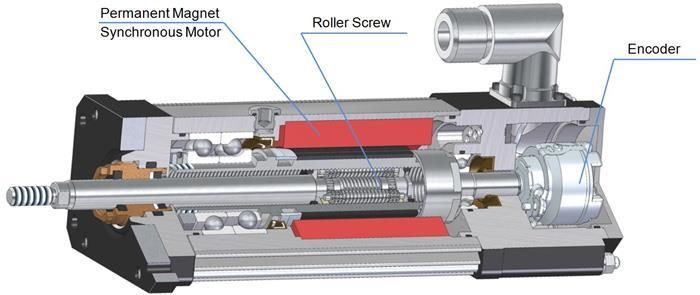Roller screws are generally considered the standard planetary design, but several variations exist, including differential, recirculating, and inverted versions. Each design offers unique advantages in terms of performance capabilities (load capacity, torque, and positioning), but the primary advantage of the inverted roller screw is its ability to be easily integrated into actuators and other subassemblies.
Recall that standard roller screws (also known as planetary roller screws) use threaded rollers with teeth on the end of the roller to engage the gear ring on each end of the nut. For inverted roller screws, the functions of the screw and the nut are interchanged or inverted. The nut is essentially a tube with a threaded I.D. Instead of being just long enough to accommodate the rollers and mating gear rings, the length of travel of the nut is. And the screw shaft - rather than being threaded along its entire length - is threaded just long enough to equal the length of the roller.

Inverted Roller Screw
With an inverted roller screw, the nut length determines the stroke, and the threaded portion of the screw is only as long as the rollers.
So when the screw shaft rotates, instead of the nut and roller translating along the length of the screw, the rollers remain axially stationary on the screw (that is, the rollers and nut do not move along the length of the screw). Conversely, turning the screw shaft causes the rollers and screw to translate along the length of the nut. Alternatively, an inverted roller screw can be used to drive the nut and keep the screw (and rollers) axially stationary.
Because the gear ring that normally sits at the end of the nut is now at the end of the threaded portion of the screw, the nut diameter can be made slightly smaller than that of a similarly sized planetary roller screw. While machining threads within a relatively long nut body can be difficult, inverted roller screws require fewer starts than standard planetary roller screws, meaning they can use larger threads, which in turn provides Higher load capacity than standard design.

Inverted roller screws are ideal for pushrod-style actuators, where the pushrod extends and retracts from the actuator housing. And because a large portion of the screw shaft is unthreaded (only the part where the rollers are), the shaft can be customized to fit the actuator design and application requirements. The inverted design also makes it relatively easy for actuator manufacturers to mount the magnet to the roller screw nut and use it as the rotor for the integrated motor screw assembly.
Post time: Nov-13-2024






